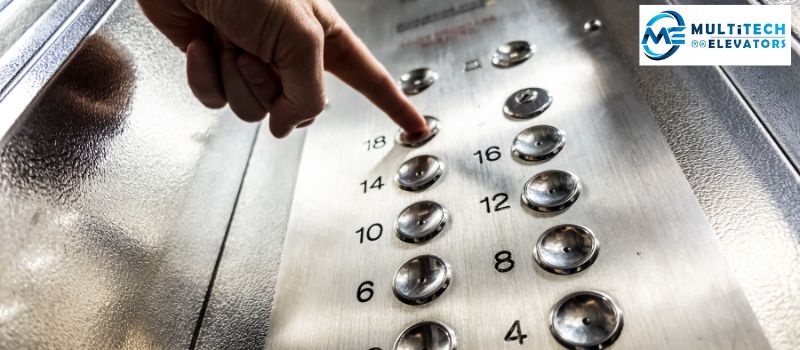Indoor lifts, also known as home lifts, stairlifts, or residential elevators, provide essential mobility support for individuals with disabilities or reduced mobility. These lifts are designed to help people navigate different levels of a home or building easily, ensuring safety and independence. With modern technology, they come in various designs, features, and capacities, making them adaptable to the specific needs of the user. In this guide, we will explore what indoor lifts are, the types available, their benefits, installation process, costs, and considerations to make before purchasing.
1. What are Indoor Lifts for Disabled Individuals?
Indoor lifts for disabled individuals are specialized mobility devices that transport people with physical limitations between floors. These lifts are either installed in private homes, public spaces, or residential buildings, providing disabled individuals the freedom to move between different floors without assistance. They are particularly beneficial for those who use wheelchairs, have limited mobility, or find stairs difficult to navigate due to age or injury.
The aim of an indoor lift is to enhance the quality of life, promote independence, and provide safe movement. There are several types of indoor lifts, each catering to different needs and space configurations.
2. Types of Indoor Lifts
Several types of indoor lifts are available, each offering unique features depending on the specific needs of the individual and the structure of the home or building. The main types include:
a. Stairlifts
Stairlifts are perhaps the most common type of indoor lift. They are mechanical chairs that are installed along a staircase, allowing the user to sit and be carried up or down the stairs. The stairlift runs on a rail attached to the stairway and can be fitted to both straight and curved staircases.
- Key Features:
- Simple to operate with basic controls.
- Cost-effective compared to other lifts.
- Ideal for users who can walk short distances but struggle with stairs.
- Available for straight, curved, or narrow staircases.
b. Platform Lifts
Platform lifts, also known as wheelchair lifts, are designed to accommodate individuals in wheelchairs. They consist of a platform that moves vertically along a rail or shaft. Platform lifts are often installed in spaces where a conventional elevator isn’t feasible.
- Key Features:
- Spacious enough to accommodate a wheelchair and companion.
- Suitable for both short and long distances.
- Can be installed in homes, public buildings, and outdoors.
- Often used in multi-level buildings to ensure full accessibility.
c. Residential Elevators
Residential elevators are fully enclosed and resemble commercial elevators but are built for residential settings. They provide a luxurious and practical way for individuals with disabilities to move between floors. These lifts require more extensive installation, often involving modifications to the home.
- Key Features:
- Enclosed cabin design.
- Operates on electric or hydraulic power.
- Smooth, quiet operation.
- Can be customized with various features like automatic doors and voice controls.
d. Through-Floor Lifts
Through-floor lifts are a unique type of indoor lift that travels between floors without the need for a shaft. The lift moves vertically through an opening cut into the ceiling and floor, disappearing into the room above when not in use. These lifts are ideal for users who require wheelchair access and have limited space.
- Key Features:
- Minimal structural modifications required.
- Accommodates wheelchairs and companions.
- Discreet design that doesn’t intrude on room space.
e. Vertical Platform Lifts (VPL)
A vertical platform lift (VPL) is similar to a platform lift but operates more like a mini elevator. It is suitable for transporting both wheelchair users and individuals who have difficulty navigating stairs. VPLs are commonly used indoors and outdoors in residential and commercial settings.
- Key Features:
- Can cover higher distances than a standard platform lift.
- Ideal for users with mobility scooters or wheelchairs.
- Safe, enclosed travel.
3. Benefits of Indoor Lifts for Disabled Individuals
Installing an indoor lift can significantly improve the life of someone with a disability. The benefits are extensive, ranging from safety and independence to the increase in property value.
a. Improved Mobility
The most obvious benefit is improved mobility within the home. Indoor lifts make it easier for people with limited mobility to move between floors without needing assistance. This is especially important for maintaining independence.
b. Increased Safety
Stairs are a common source of accidents, particularly for those with physical limitations. Indoor lifts eliminate the risk of falls, providing a safe alternative to stairs. They are designed with safety features like seat belts, sensors, and emergency stops to ensure secure usage.
c. Independence and Comfort
Indoor lifts allow disabled individuals to navigate their home or building independently. They can come and go as they please without relying on a caregiver, providing a sense of autonomy and boosting confidence.
d. Customizable Options
Lifts can be customized to fit the user’s needs, including options for remote controls, cushioned seating, foldable platforms, or voice commands. This makes them adaptable to the changing needs of the user over time.
e. Increased Property Value
A well-installed lift can add value to a home. Potential buyers who have family members with disabilities, or who are planning for their own future needs, will see a lift as a desirable feature.
4. The Installation Process
Installing an indoor lift involves several steps, starting from the initial consultation to final testing. It’s important to hire professionals who specialize in lift installation to ensure the process is done safely and efficiently.
a. Initial Consultation
A professional lift company will first assess your home to determine which lift is suitable. They will measure the space available, assess the structure, and discuss your mobility needs.
b. Design and Customization
Once the type of lift is chosen, the next step involves designing the lift to meet the specific needs of the user and the home’s layout. Features like seating, platforms, and safety mechanisms can be customized.
c. Installation
The installation process varies depending on the type of lift. Stairlifts can usually be installed in a few hours, while residential elevators and through-floor lifts may require structural modifications, taking a few days or weeks to complete.
d. Testing and Training
After installation, the lift is thoroughly tested to ensure it operates correctly and safely. The user will also be trained on how to operate the lift, including how to use emergency controls.
5. Cost of Indoor Lifts
The cost of an indoor lift varies based on the type, customization, and installation requirements. Stairlifts are typically the most affordable option, ranging from $2,000 to $5,000, depending on the length of the staircase. Platform lifts and through-floor lifts are more expensive, often costing between $10,000 and $20,000. Residential elevators are the most costly, with prices ranging from $15,000 to over $50,000.
In addition to the upfront cost, it’s important to consider maintenance costs. Regular servicing is essential to keep the lift functioning safely and efficiently.
6. Key Considerations Before Installing an Indoor Lift
Before purchasing and installing an indoor lift, several factors must be considered:
a. Space
Evaluate the available space in your home. Some lifts require more room, while others, like stairlifts, can be installed in tighter spaces.
b. Budget
Determine your budget and explore financing options if necessary. You may also want to check if your insurance covers part of the cost.
c. User’s Needs
Assess the user’s current and future needs. Will they need a lift for a wheelchair, or will a simple stairlift suffice? It’s important to choose a lift that can accommodate changes in mobility.
d. Maintenance
Factor in the cost and frequency of maintenance. Lifts need regular servicing to ensure safety and reliability.
e. Aesthetic Preferences
Consider the aesthetic impact of the lift in your home. Many modern lifts can be customized to blend seamlessly with your home’s interior design.
Conclusion
Indoor lifts for disabled individuals are life-changing devices that enhance mobility, safety, and independence. With various options available, from stairlifts to through-floor lifts, it’s possible to find a solution that meets specific needs and fits within the space and budget of the home. Learn More


